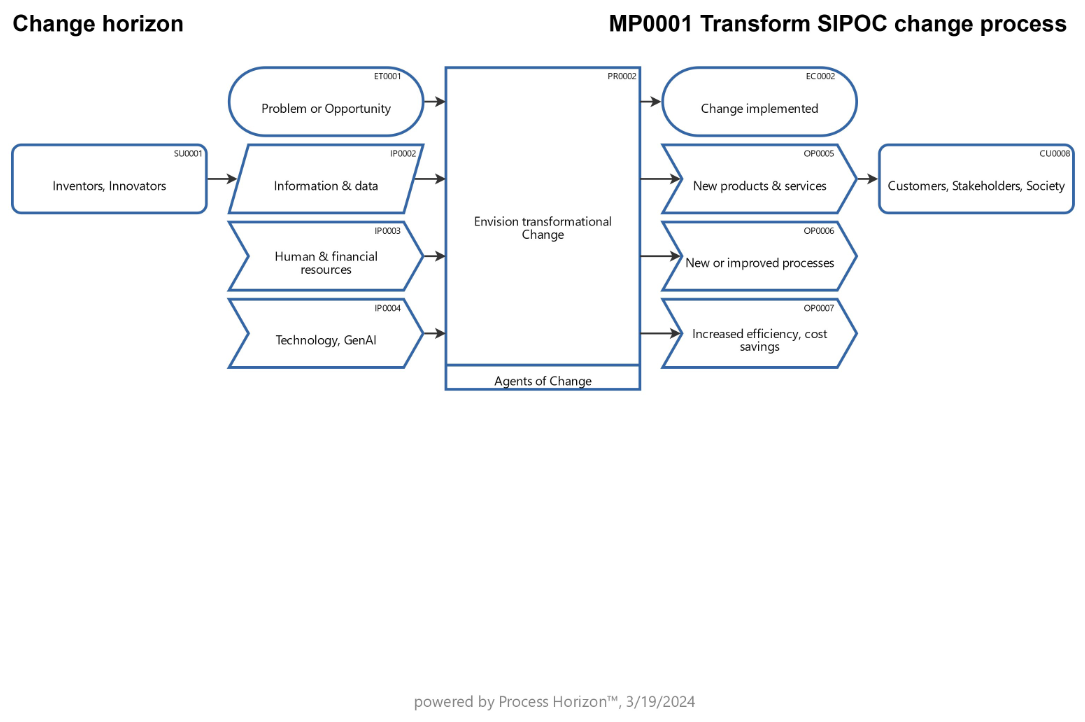SIPOC process model & map as enabler for any transformational AI change project

A SIPOC (Suppliers > Inputs > Process > Outputs > Customers) process model with a SIPOC process map is particularly valuable as an enabler for transformational AI change projects, especially when developing and deploying new AI products or services.
- Clarity and Scope Definition The SIPOC model helps provide a clear and structured understanding of the AI project's scope. It outlines the suppliers of data and resources, the inputs required for AI development (such as algorithms, training data, computing resources), the processes involved in AI model training and deployment, the desired outputs (AI predictions, recommendations, automations) and the customers or end-users who will benefit from the AI product or service.
- Alignment with Business Objectives By mapping out the SIPOC elements, the AI project team can ensure alignment with business objectives and stakeholder requirements. This includes understanding the specific needs of customers, internal stakeholders, regulatory compliance and business goals that the AI solution aims to address.
- Risk Identification & Mitigation The SIPOC process map enables teams to identify potential risks and challenges at each stage of the AI project lifecycle. This includes risks related to data quality, algorithm selection, model performance, ethical considerations, regulatory compliance, and user acceptance. By identifying these risks early, teams can develop mitigation strategies and contingency plans.
- Resource Planning & Management With a SIPOC model, project teams can effectively plan and manage resources required for the AI project. This includes identifying the necessary data sources, expertise in AI development and data science, computational resources (such as cloud infrastructure), budget allocation and timeline management.
- Process Improvement & Optimization The SIPOC process model serves as a basis for continuous process improvement & optimization throughout the AI project lifecycle. Teams can analyze each element of the SIPOC map to identify areas for efficiency gains, automation opportunities, algorithmic enhancements and scalability improvements.
- Stakeholder Communication & Collaboration The SIPOC model facilitates effective communication & collaboration among project stakeholders, including data scientists, AI engineers, domain experts, business leaders, regulatory bodies and end-users. It ensures that all stakeholders have a common understanding of the AI project's goals, progress, and outcomes.
- Performance Measurement & Evaluation Finally, the SIPOC model enables teams to define key performance indicators (KPIs) related to AI project success, such as model accuracy, deployment speed, user satisfaction, ROI and business impact. These KPIs help measure and evaluate the effectiveness of the AI solution and its alignment with business objectives.
Using the following link you can access this sandbox process model in the ProcessHorizon web app and adapt it to your needs (easy customizing) and export or print the automagically created visual process map as a PDF document or share it with your peers: https://app.processhorizon.com/enterprises/87frcfuEq96NLfApPN4wPD8B/frontend

